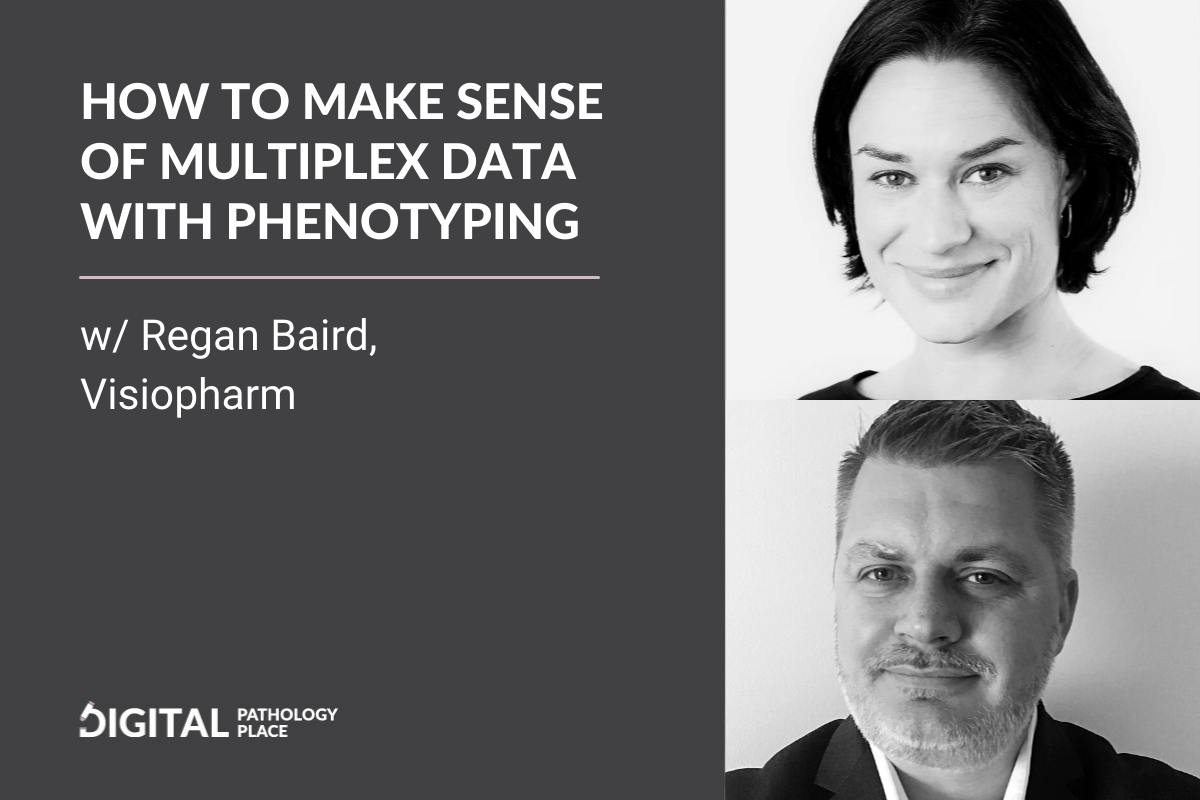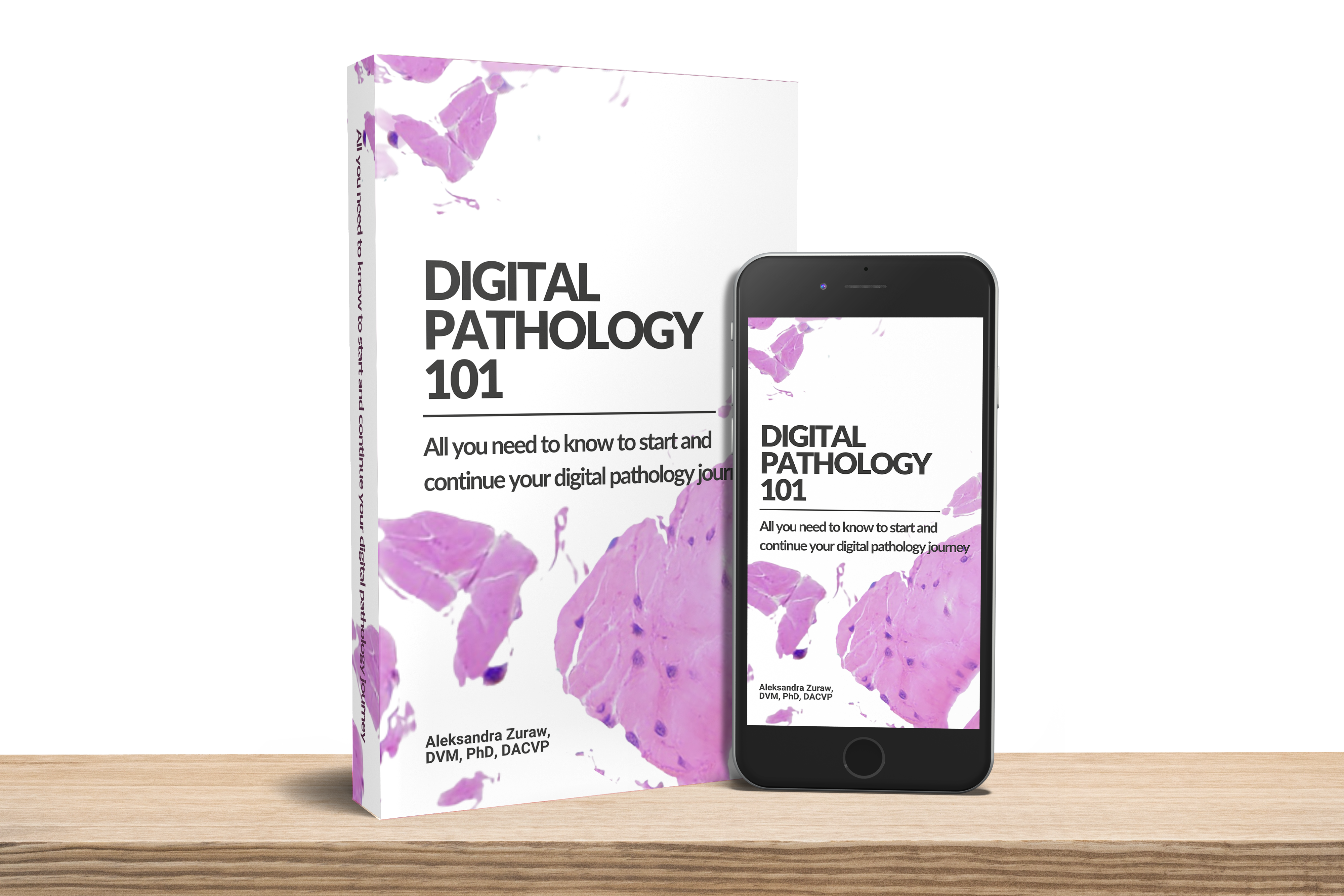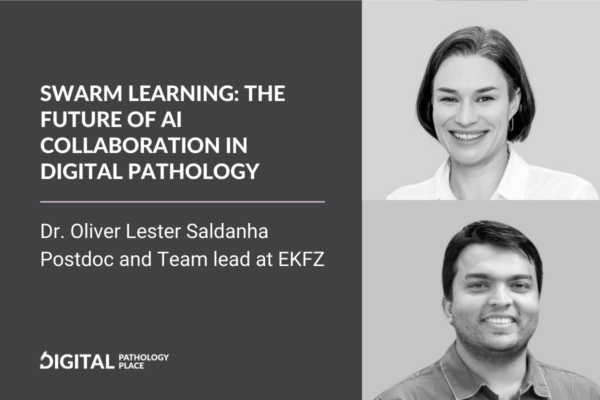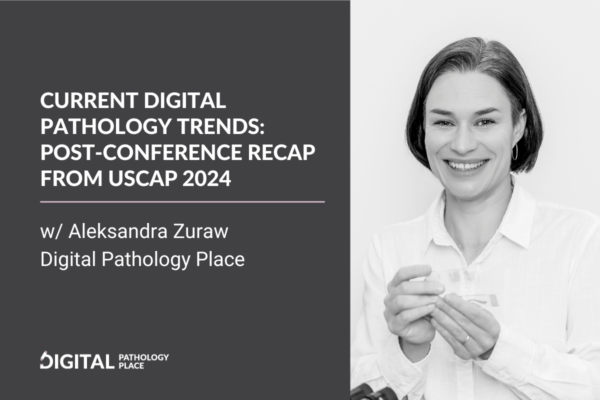Aleksandra Zuraw: [00:01:17] Today I have Regan Baird from Visiopharm as my guest again, and this is the second part of our three-part Multiplex series. Today we’re going to be talking about how to make sense of multiplex data with phenotyping. Hi, Regan. Welcome again to the podcast. How are you today?
Regan Baird: [00:01:37] Oh, I’m doing great. Thanks, Aleks, for having me.
Aleksandra: [00:01:39] Let’s start with a few words about yourself for those who didn’t listen to the first part of our series yet. And if you didn’t listen, I’m going to leave the show notes to the first episode.
Regan: [00:01:50] Hi, everybody. I’m Regan Baird. I am the Regional Manager for the Eastern North America for Visiopharm.
Aleksandra: [00:01:57] So last time we talked about multiplexing, what that is and that this staining can generate great amount of multilayered data.
[00:02:07] How can we make sense of it?
Regan: [00:02:09] Yeah, that’s the hard part, being able to generate these multiplex images is getting easier and easier. And the better you can make those images, the easier they’re going to be to [00:02:17] interpret.
[00:02:17] But when you’re looking at multi-dimensional data, it can be a challenge to understand what’s going on in the tissue. And really, you need the aid of computational assistance to really parse out all of that high-dimensional data. Of course you can visually look at the images and turn on and turn off all of the different signals in order to figure out what’s going on a particular piece of tissue. But this is going to be slow and.
[00:02:42]You can take a manual approach if you’d like when the Plex is low, but as the multiplex gets larger and larger, it’s going to be really challenging and you’re going to need computational assistance for sure.
Aleksandra: [00:02:53] So last time we mentioned the term phenotyping that multiplex can be used for cell phenotyping in the tissue.
[00:03:01] What is phenotyping?
Regan: [00:03:02] So phenotyping is, as you say, the ability to identify every single cell in the tissue, usually when you design your panel, it’s because you’re looking to identify cells from particular lineages. And the cells that are in [00:03:17] each lineage may have different levels or states of functional markers.
[00:03:21] So you may want to say, see, okay, where are tumor cells? Where are immune cells? Where are just depends on the tissue you’re looking at. And so you not only want to find those cells, but you also want to know, are they in a certain activation state, are there different signal, transduction pathways that are turned on or activated and potentially do they have certain genes?
Aleksandra: [00:03:41] What would be the applications, obviously any scientific question that includes different biomarkers, so let’s talk about the research applications, but also let me know if there are already attempts to bring it into the clinic.
Regan: [00:04:02] Really, we want to identify every cell that’s in the tissue.
[00:04:05] If we can, as close as possible what family does it come from? Where is it located in the tissue? Is it in a particular compartment? what other cells are interacting the [00:04:17] given cell?
[00:04:18] The most common place that I’m seeing multiplex today is really an immuno-oncology, where you can go in and understand what’s happening in the tumor microenvironment, What’s the immune response before and after drug treatment, the immune response in responders and patients that recur from disease. a lot of interesting places because in a multiplex you’re able to see more in the tissue.
[00:04:43] You’re able to uncover more. And other places we’re starting to see some exciting work is in the immune response, multiple types of immune cells. There’s multiple types of macrophages. And so just putting a single macrophage label in to a tissue will tell you where the macrophages are, but it doesn’t give you much more than that.
[00:05:03] And so there’s a couple of papers out there now where, can, by identifying the different types of macrophages that are. In liver, you can distinguish between different disease States. For example, [00:05:17] another interesting place is in breast right now for a single breast panel.
[00:05:22] There’s four five, six biomarkers that are being used on different slices of tissue. It could be really interesting to create a multiplex that incorporated all of them on the same piece of tissue.
Aleksandra: [00:05:33] Mm-hmm [affirmative]. You mentioned a panel. What would be a panel? In the research setting, you can, again, design whatever you want, but as we’re approaching use of this technology in the clinic what are the markers that are of interest?
Regan: [00:05:51] Sure, there is actually quite a lot, but a limit to the number of antibodies that have been validated for doing multiplex and even fewer that have been clinically validated. And so the panel would be, and again, it depends on the tissue or the disease state that you’re looking in, but the panel would be the selection of biomarkers that you’re going to be looking at on the tissue.
[00:06:16] Mm-hmm [affirmative]. [00:06:17] And so for breast, it’s the hormone receptors, ER, and PR it’s proliferation marker. you HER2. You could also add something like cytokeratin to look for epithelial tumors to help you delineate where the tumors are in a single panel. And sometimes those are all done on separate pieces of tissue.
Aleksandra: [00:06:37] Mm-hmm [affirmative]. So this panel, the choice of your markers is defined by the scientific question or the diagnostic question that you are trying to answer?
Regan: [00:06:51] Exactly. Exactly. So, if you want to find immune cells, you’re probably going to be adding some CD markers. If you’re looking for tumor cells, you’re going to be adding tumor-specific markers.
[00:07:02] If you’re going to be looking for different expression of Activation markers or signal transduction markers, you’d want to combine those all into the panel. Commercial vendors are starting to create a lot of these [00:07:17] panels for us. So we don’t have to think too much about the antibodies and validating the individual antibodies.
[00:07:24] So that’s nice.
Aleksandra: [00:07:25] So it’s going to be possible to just, buy a certain group of biomarkers, stain your tissue and then maybe apply an image analysis solution to quantify it?
Regan: [00:07:36] Exactly. Exactly.
Aleksandra: [00:07:38] So that takes us to the next questions. What tools can be used for phenotyping? We said that we can do it visually, we can switch on and off. If we’re talking about IF, we can switch the channels on and off and look at them marker by marker. As if we had serial sections. But if we wanted to streamline this process, what tools can we use?
Regan: [00:08:01] Sure. This is where the computational assistance is really going to help out. And there’s two main approaches to being able to do this. The first is to identify which phenotypes you’re interested in. So you’ll tell the computer, “I’m interested in anything that’s [00:08:17] T-cell positive through something like CD3.”
[00:08:19] And if it’s CD3 positive, is it CD4 or CD8 positive to distinguish between two different populations of T-cells.
[00:08:27]I also want to find my tumor cells and you can tell the computer the list of phenotypes that you’re wanting and it’ll go in and find them based on certain intensity or other parameters that might be distinguishing.
[00:08:39] And this is fine if you have a small plex, a small number of biomarkers that you’re looking for, or a small number of phenotypes that you’re looking for. Because, if you think about it, it’s an exponential growth of the number of phenotypes that you can have when you start adding more and more biomarkers. So if you have three biomarkers in your panel, that would be two to the third power or eight different phenotypes that you could possibly get three biomarkers.
[00:09:08] If you’re talking about 30, two to the 30th power, that’s going to be a lot of and phenotypes that you’re going to be going after. [00:09:17] And no one wants to sit and create the rules for finding two to the 30th different combinations.
Aleksandra: [00:09:22] How do you deal with that?
Regan: [00:09:23] Yeah. It’s been solved already, so that’s great.
[00:09:26] It’s done regularly in flow cytometry. The beautiful thing in flow cytometry is that they’re doing individualized cells. So they grab a cell, they measure all of the biomarkers associated with that cell and they move on to the next one. And the way that they’re able to determine how to phenotype cells in flow cytometry is a technique using machine learning and auto clustering. And so we’ve been able to adapt an automatic phenotyping using machine learning-based auto clustering. So the computer will just go in, look at all the individual cells and tell you what phenotypes they actually are expressing.
Aleksandra: [00:10:01] Mm-hmm [affirmative]. So this obviously, like you said, it’s machine learning, this is computational assistance. And this is what we’re going to be talking about in our next episode. We’re going to be talking about the considerations for choosing an image analysis software.
[00:10:17] [00:10:17] Thank you so much for giving us the overview of phenotyping, Regan.
Regan: [00:10:22] Oh, my pleasure. Thanks, Aleks.
Aleksandra: [00:10:23] Have a great day.
Regan: [00:10:25] You too.















